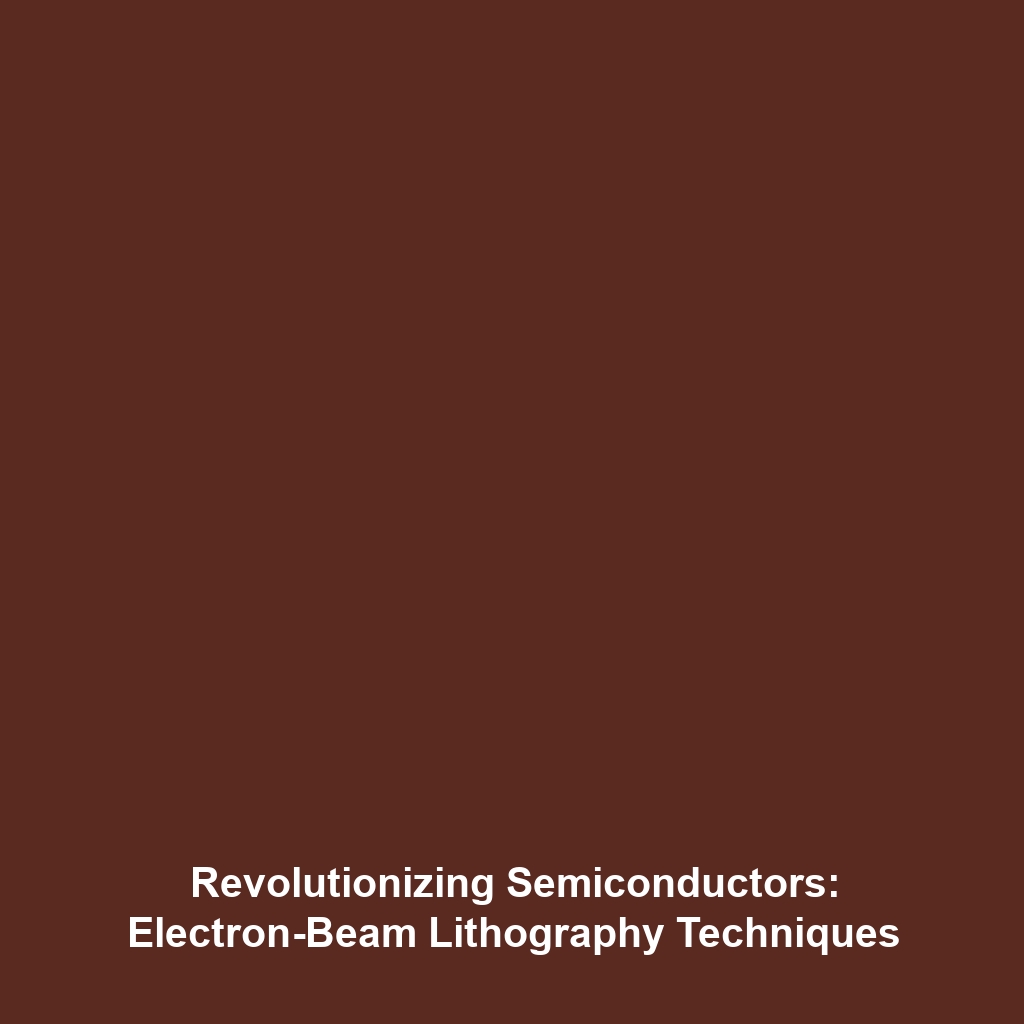Techniques like Electron-Beam Lithography Enable Nanoscale Patterning for Semiconductor Manufacturing
Introduction
The evolution of advanced nanomaterials has significantly transformed semiconductor manufacturing, particularly through sophisticated techniques like electron-beam lithography. This method enables the precise nanoscale patterning necessary for enhancing the performance and efficiency of electronic devices. As the demand for smaller, faster, and more efficient semiconductors rises, electron-beam lithography serves as a cornerstone in addressing these challenges. Understanding this technique is crucial for researchers and manufacturers aiming to harness the full potential of advanced nanomaterials in modern technology.
Key Concepts of Electron-Beam Lithography
Electron-beam lithography (EBL) is a powerful method used to create intricate nanoscale patterns, primarily through the use of focused electron beams that alter the properties of a resist material. The following are major concepts that connect EBL with advanced nanomaterials:
Basic Principles of Electron-Beam Lithography
- Electron Beam Exposure: A focused beam of electrons is directed onto the substrate coated with a resist material.
- Resist Development: Post-exposure, the resist is developed to reveal the intended nanostructures.
- Pattern Transfer: The developed patterns are transferred to the substrate through etching processes.
Comparison with Other Lithography Techniques
Unlike conventional optical lithography, EBL provides higher resolution and greater flexibility in design, making it highly suitable for advanced nanomaterials applications.
Applications and Real-World Uses
Electron-beam lithography has been utilized in several critical applications that highlight its significance within advanced nanomaterials:
- Microelectronics: EBL is crucial in fabricating nanostructures used in transistors and memory devices.
- Optoelectronics: It enables the construction of devices like photonic circuits and quantum dots.
- Nanophotonics: Advanced patterns created through EBL have led to the development of metamaterials with unique optical properties.
Current Challenges of Electron-Beam Lithography
Despite its advantages, there are challenges associated with the application of electron-beam lithography in semiconductor manufacturing:
- Speed: EBL is relatively slow compared to other lithography techniques, making it less suitable for mass production.
- Cost: The equipment and operational costs can be prohibitive for smaller companies.
- Resolution Limits: Achieving extremely fine resolutions can present technical difficulties.
Future Research and Innovations
Research in electron-beam lithography is ongoing, focusing on overcoming existing limitations and enhancing its capabilities. Innovations such as:
- Electron Beam Induced Deposition (EBID): This method is being explored to enable more complex patterning options.
- Machine Learning Applications: Integrating AI to optimize exposure parameters and reduce processing times.
These developments promise to expand the application of EBL in advanced nanomaterials, potentially revolutionizing semiconductor manufacturing.
Conclusion
In summary, electron-beam lithography is a pivotal technique in enabling nanoscale patterning for semiconductor manufacturing, greatly influencing the advancement of nanomaterials. Its ability to precisely create micro and nanoscale features positions it at the forefront of technological innovation. For further insights into advanced nanomaterials and their applications, click here.
